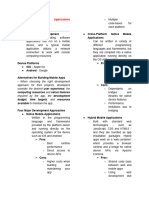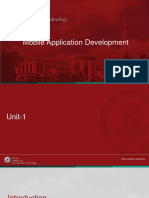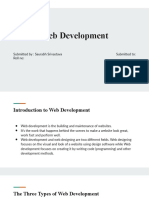0% found this document useful (0 votes)
14 views11 pagesBasics of Web and Mobile Application Development
The document provides an overview of web and mobile application development, highlighting the key components, technologies, and tools involved in each. It outlines the development lifecycle, key concepts such as responsive design and APIs, and offers learning paths for aspiring developers. Additionally, it compares web and mobile applications in terms of platform, technology, tools, and access capabilities.
Uploaded by
Reshma KaladharanCopyright
© © All Rights Reserved
We take content rights seriously. If you suspect this is your content, claim it here.
Available Formats
Download as PPTX, PDF, TXT or read online on Scribd
0% found this document useful (0 votes)
14 views11 pagesBasics of Web and Mobile Application Development
The document provides an overview of web and mobile application development, highlighting the key components, technologies, and tools involved in each. It outlines the development lifecycle, key concepts such as responsive design and APIs, and offers learning paths for aspiring developers. Additionally, it compares web and mobile applications in terms of platform, technology, tools, and access capabilities.
Uploaded by
Reshma KaladharanCopyright
© © All Rights Reserved
We take content rights seriously. If you suspect this is your content, claim it here.
Available Formats
Download as PPTX, PDF, TXT or read online on Scribd
/ 11


























































